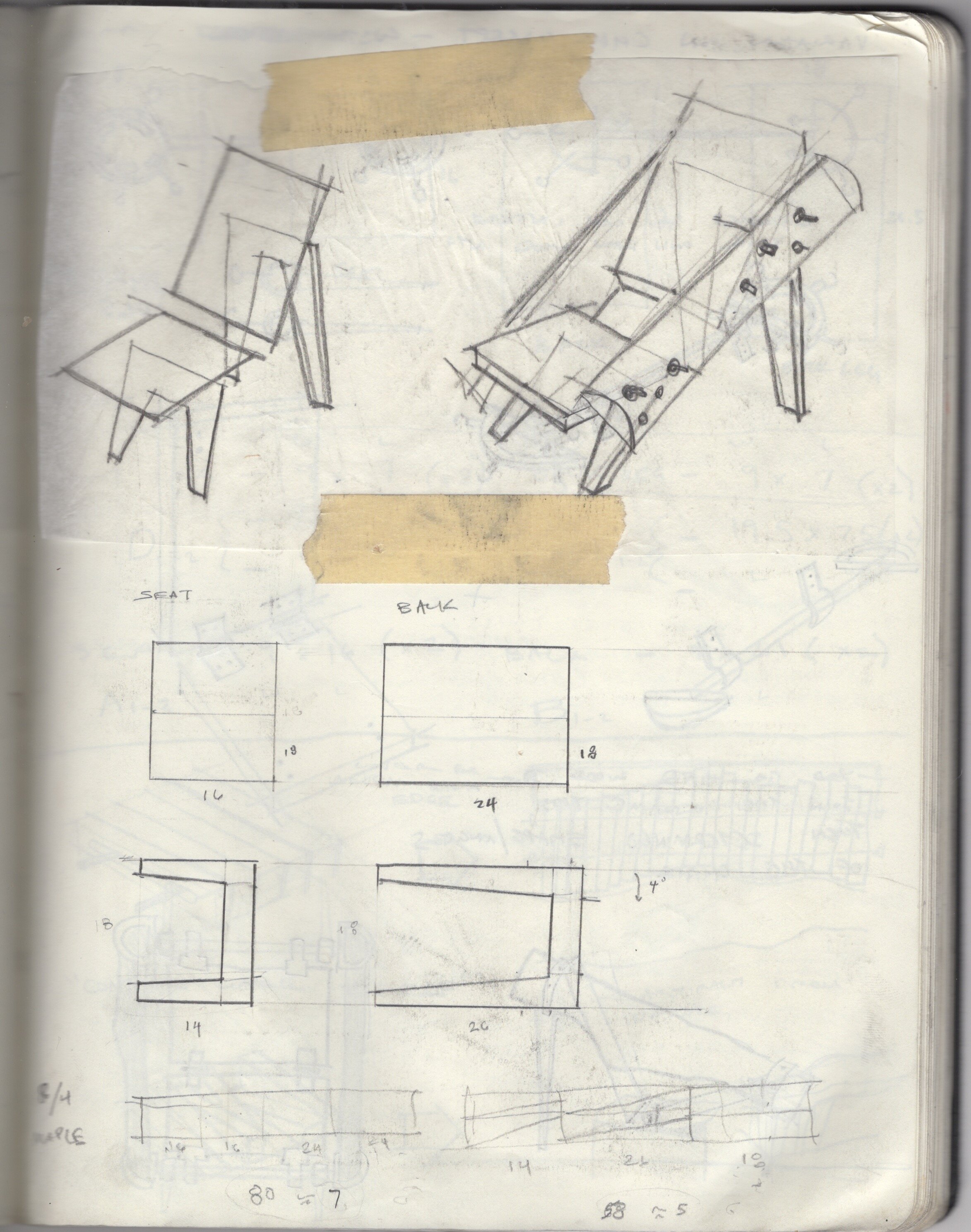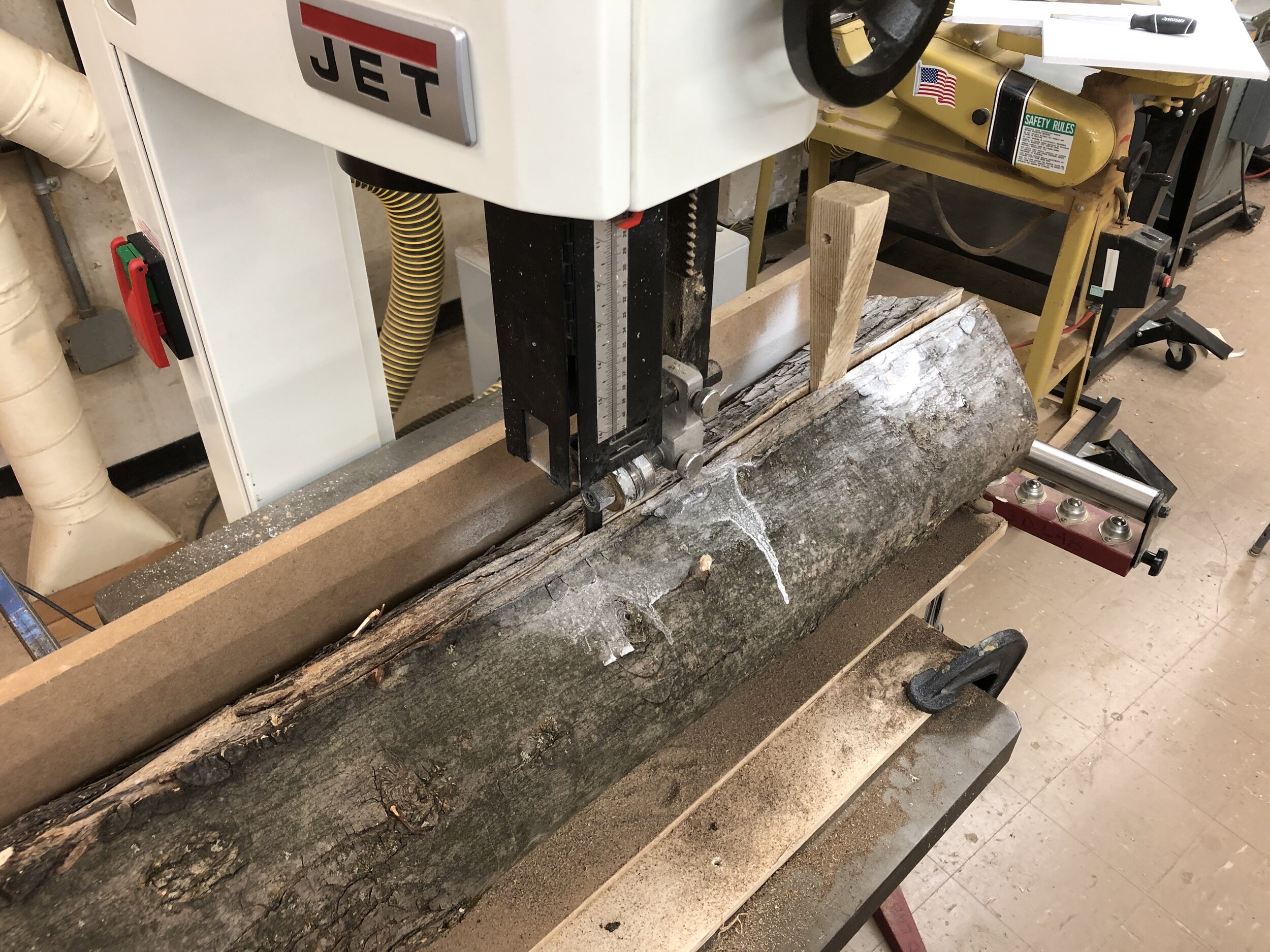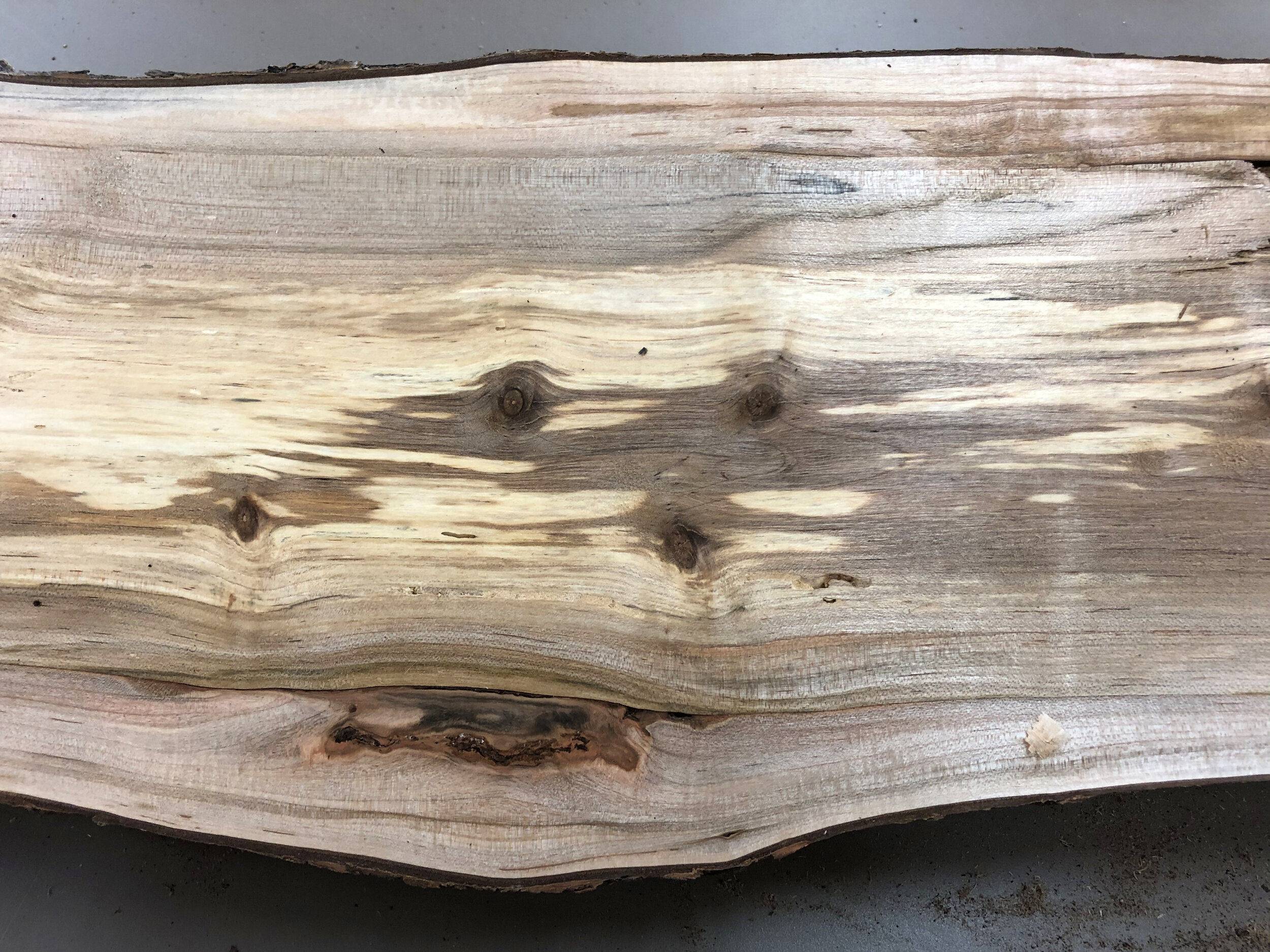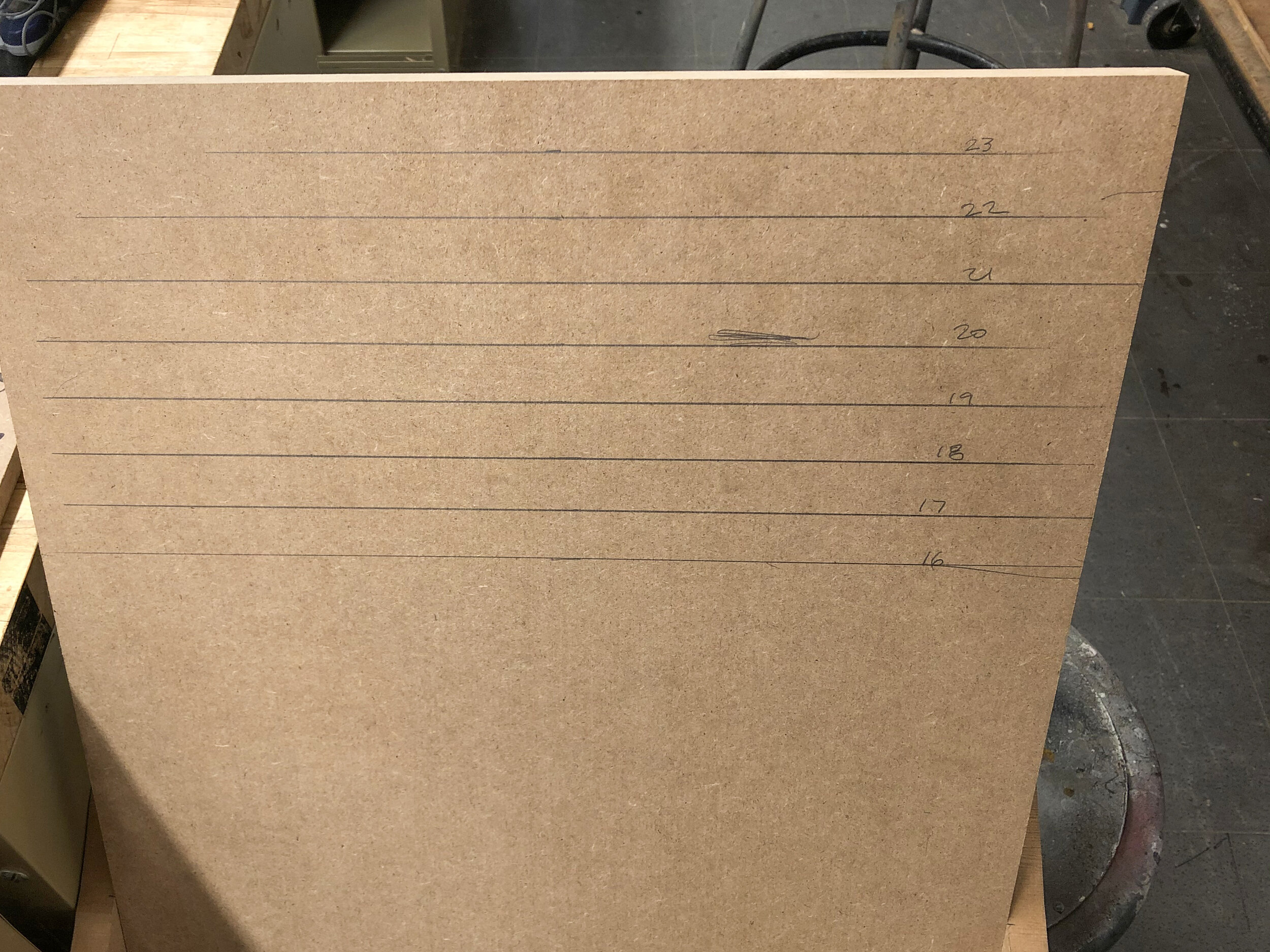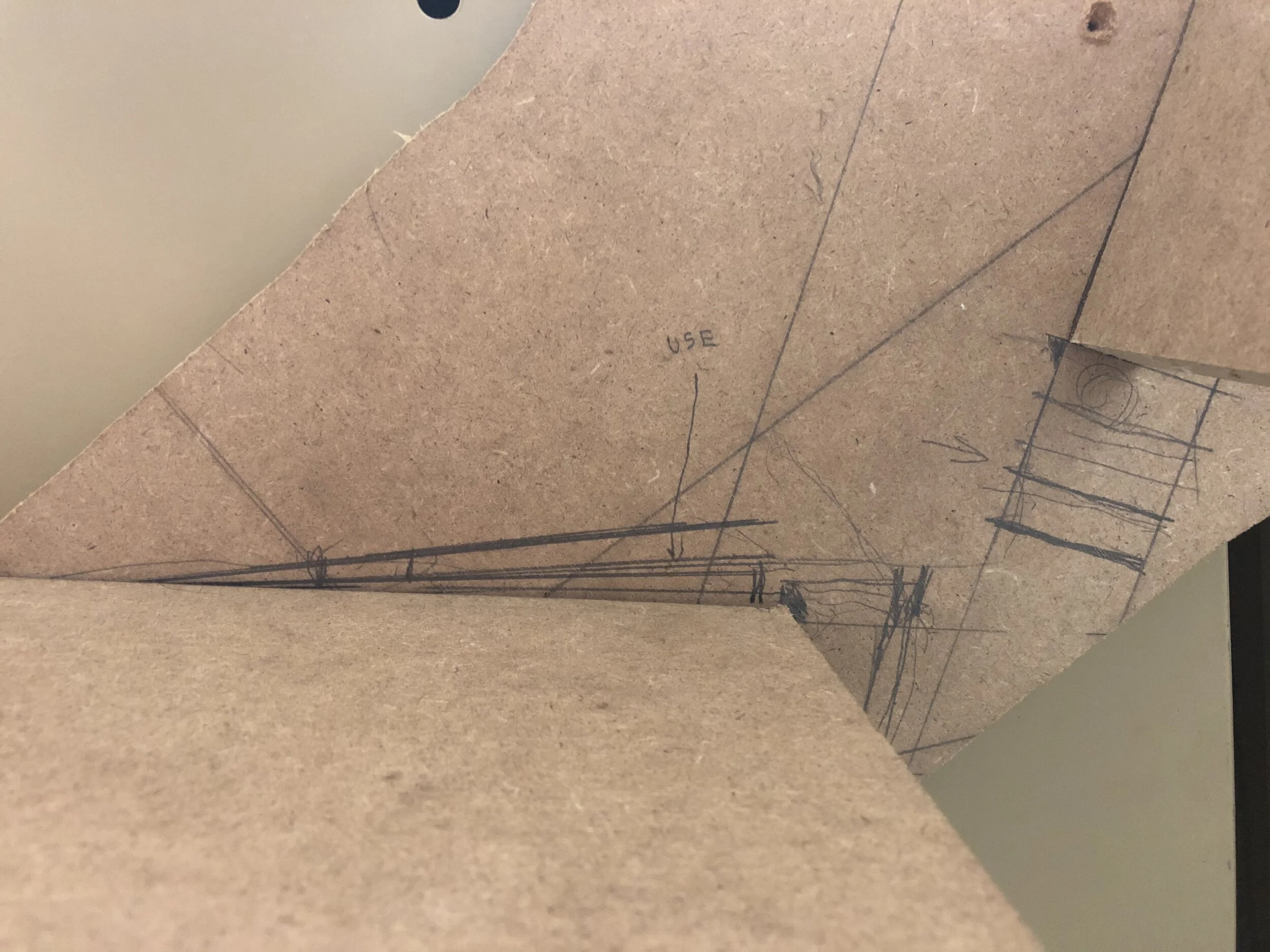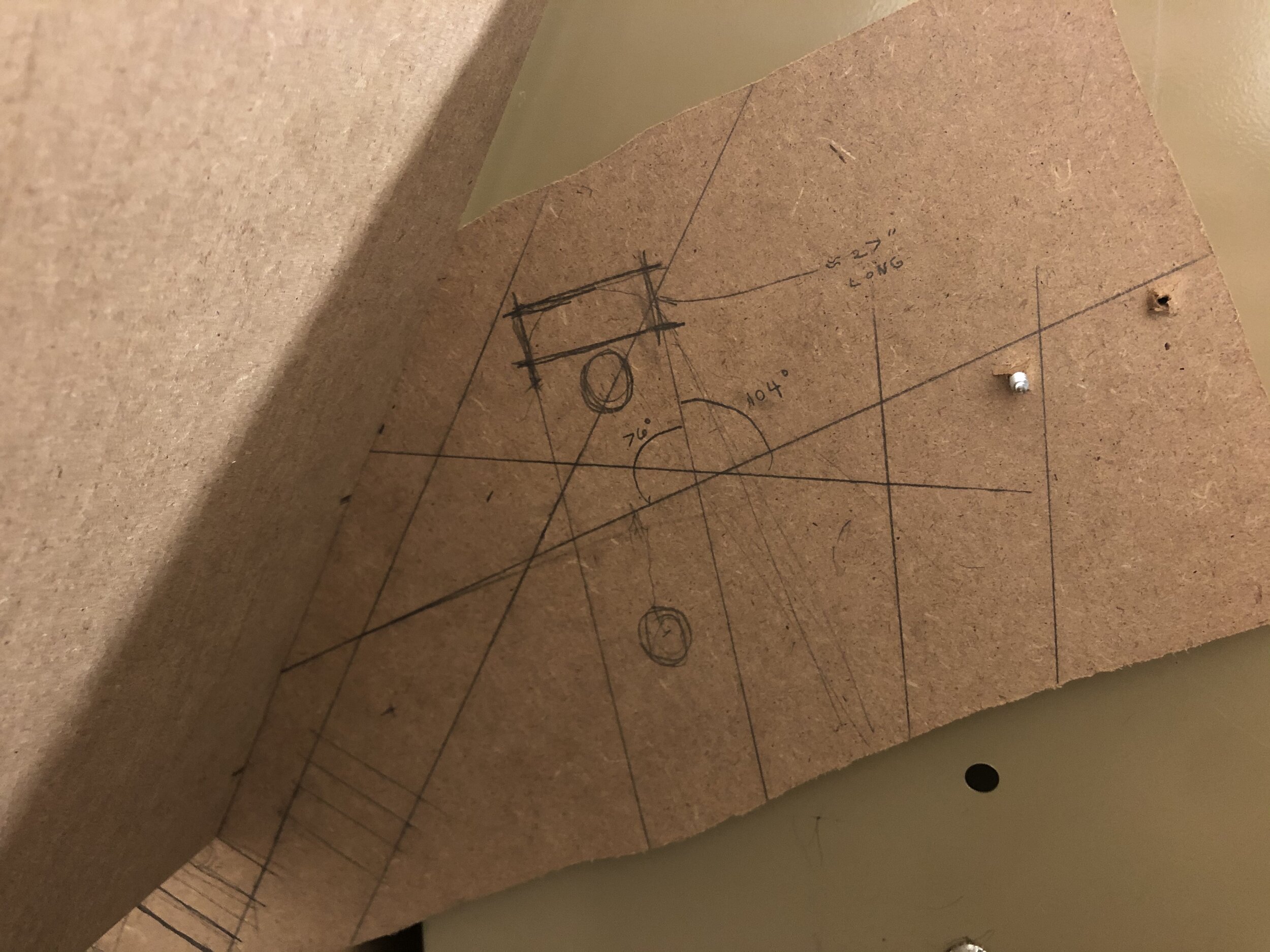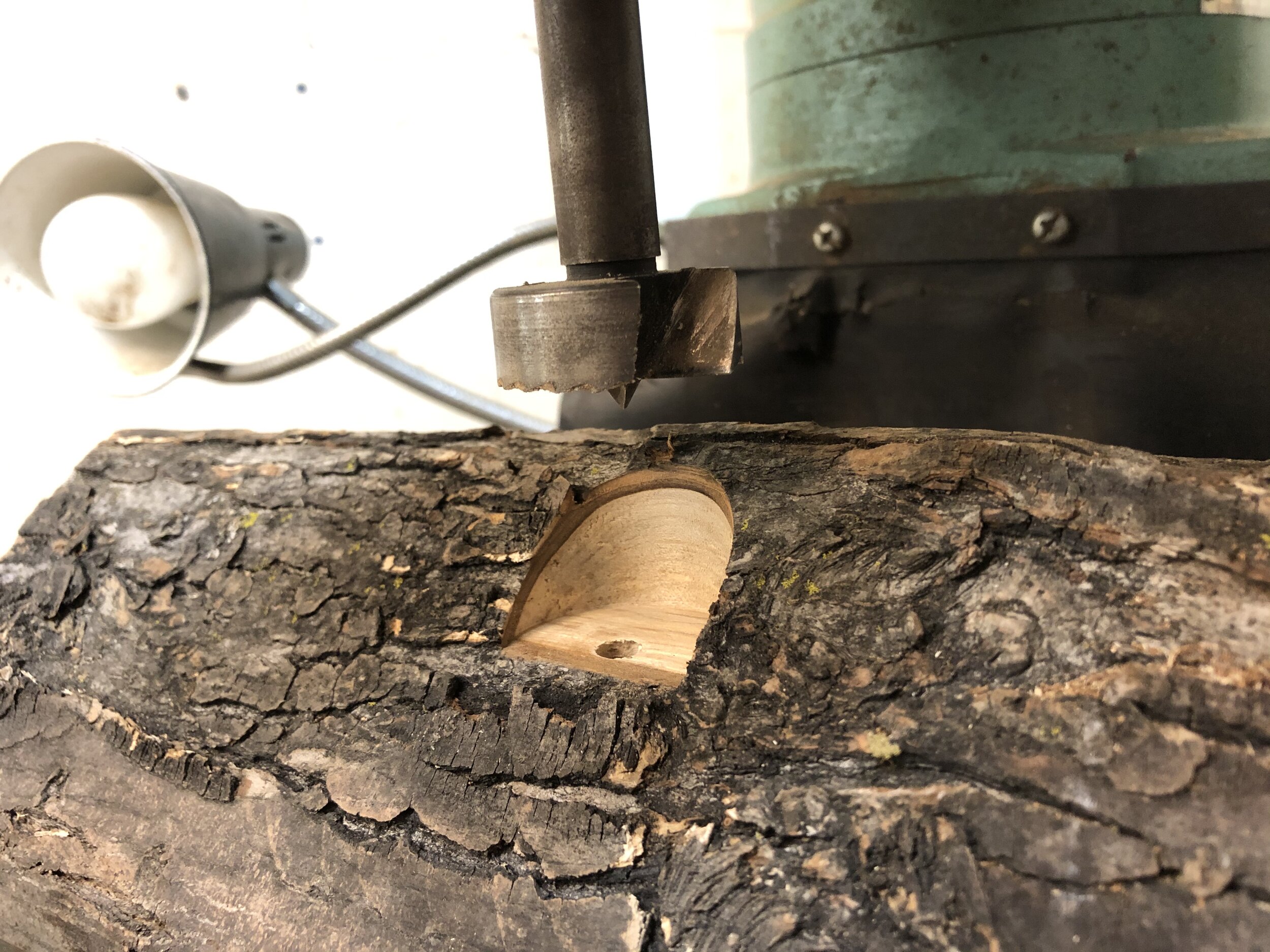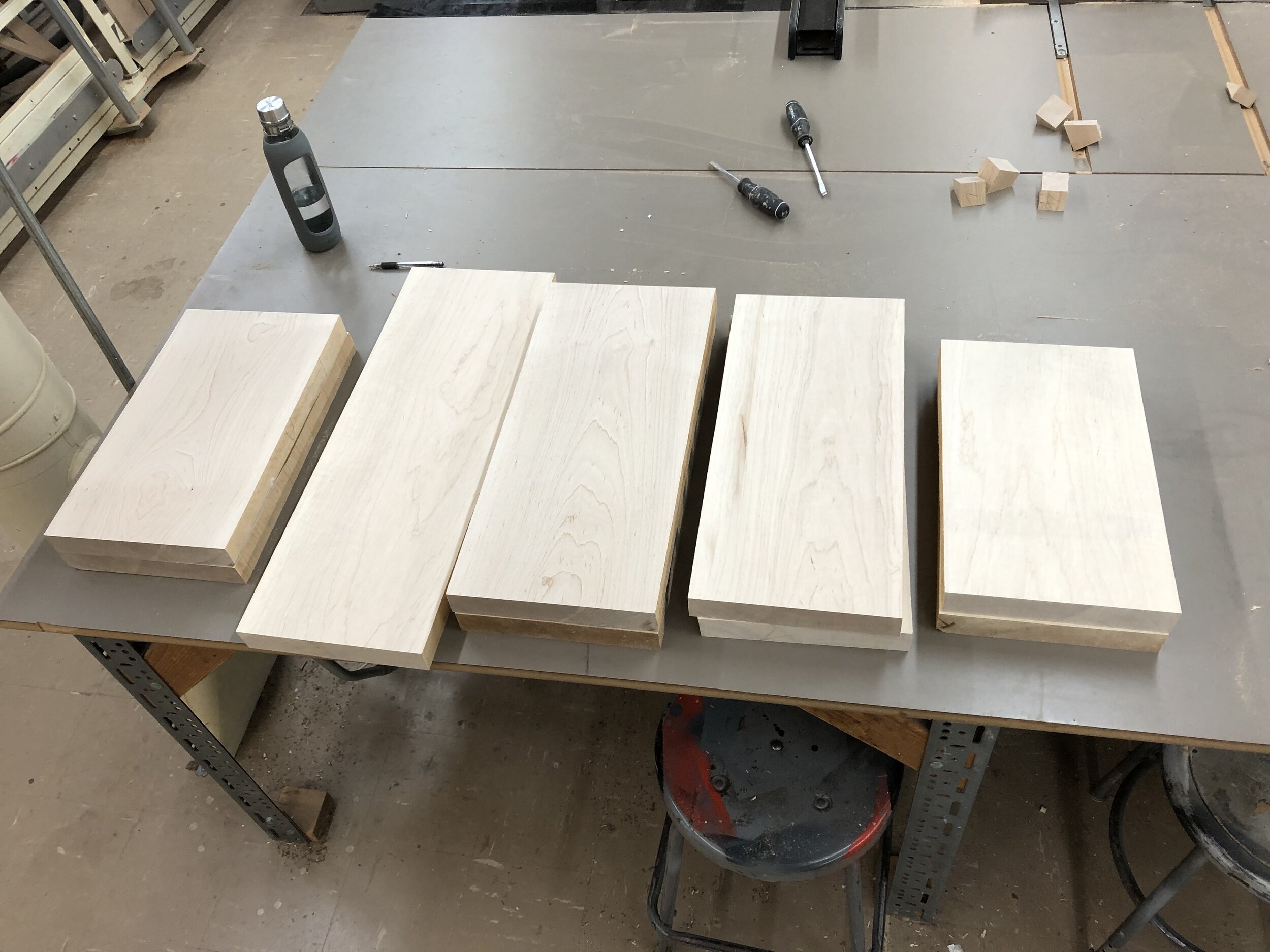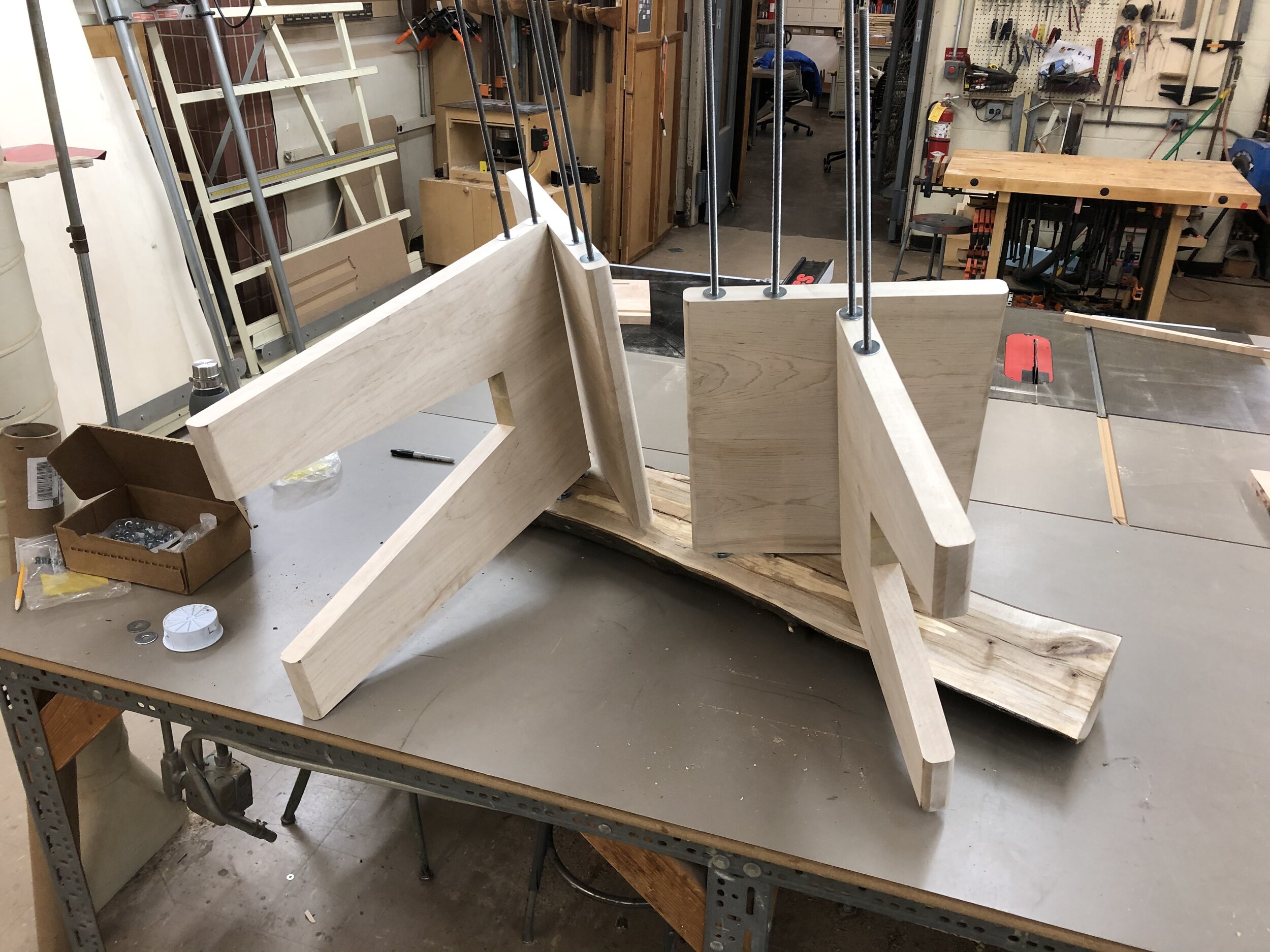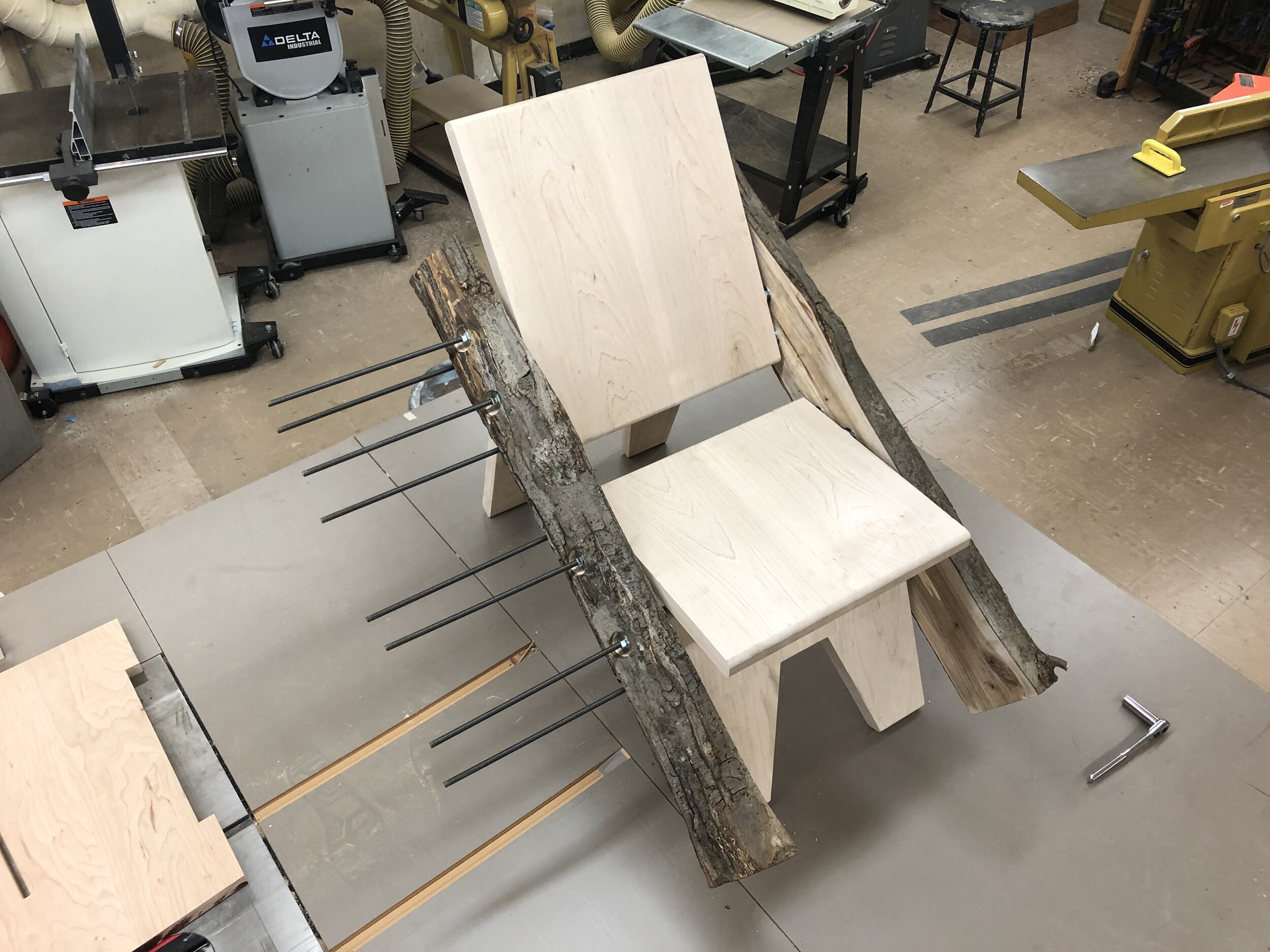Tree Chair
I designed this lounge chair in response to a particular piece of wood that intrigued me. In this piece, the components of a chair are contained between two halves of a section of tree trunk, split along the line differentiating the north-facing and south-facing sides of the tree. I made no other significant alterations to the log, as my focus was to honor the natural beauty of the wood and evoke curiosity about the original orientation of the tree in the forest. My hope was that the piece could open people up to new ways of bringing nature into their place of being, and reveal the orientation of this place in the world.
Inspiration
The initial idea for the project came after I was given wood from the land my uncle was clearing to build his new house in central New York. As a cabinetmaker, he was able to select some choice pieces from the large pile of discarded trees for me to work with.
The largest of the pieces he gave me was this four-foot section of sugar maple, which had already been drying for about a year without splitting or checking. It was when I first got it into the shop that I noticed the distinct differences in the color and texture of the bark between the two sides. Seeing this intrigued me, and when I learned that this was a result of how the tree was oriented in the forest, I knew I wanted to highlight this distinctly beautiful and conceptually significant aspect of the wood.
Concept
For this furniture piece I wanted to try to design a larger lounge-style chair—a new experience for me. I did research on the subject and found a diagram of proportions that I wanted to use as a starting point for my design.
My goal for the log was to alter it cosmetically as little as possible after splitting it in half. This way I could truly honor its inherent natural beauty, inside and out. Additionally, I figured that the chair might end up being rather bulky and heavy, so I wanted to be able to disassemble it if needed. At first my design concept was to have a metal framework that would clamp the sections in place, as well as support the seat, back and legs. However, this was too complex and cumbersome, so I moved on to a system where the chair components would be floating between the two log sections, suspended by threaded steel rods that would travel through the pieces.
I settled on this concept because the hardware would be an intriguing detail countersunk below the bark, so as to not draw too much attention away from the tree trunk. I worked out an angle for the trunk sections that would accommodate all four components of the chair, and which would be comfortable to use as the arms of the chair. This design would activate the sections, making them rise up from the ground to evoke a sense of growth. And my hope was that by having the chair components sandwiched between the two halves, the user might feel as though the chair had grown out of the trunk to span the gap between the two split pieces.
Fabrication
Splitting the log turned out to be more challenging than I expected. The 8” diameter log, while dry enough to work with, still had moisture inside that made it dense. I had to push it extremely slowly through the bandsaw, spray the blade with lubricant every few inches, and drive wedges into the cut as I went—but despite all this, I still tripped the breaker in the shop 3 or 4 times! After completing the split, I unscrewed the log from the custom sled I had built to cut it on, and jointed the inner faces of the two halves to reveal the beauty of the grain within.
I was pleasantly surprised by the striking variation in the grain. Below are a few close-up shots showing the wide variations of color and pattern present in the wood. I hadn’t worked with sugar maple before, but still suspected this was unusual—I surmised it was a result of the tree having grown in a swampy area, causing it to absorb different minerals and contaminants in the water over time.
Now that I had the final profiles of the two halves, I made a full-scale mockup of the chair out of MDF. I traced the halves and cut out their distinct shapes, then bolted one side to my desk so I could try various configurations of the seat and back relative to it. I started with the proportions I had previously recorded, and then tried out different angles of the seat and back based on what felt comfortable. I traced each position onto the log template, which resulted in a final plan for the chair’s angles and the positions of the bolts.
Next, I used the MDF template to drill pilot holes through the log sections. From there, I milled out the wide counterbores that would accommodate the washers and nuts, and widened the through-holes to their final diameter for the threaded rods to pass through.
Barring any slight adjustments to the position of the holes, the logs were now complete. I was satisfied by the amount of alteration, as it revealed the grain, preserved the bark, but would still highlight the fixtures as well. Next, I moved on to the chair components. For these I chose maple lumber of course, being sure to select one with consistent coloration throughout. Using the mill again I drilled all the through holes for the rods and used biscuit joints to join the pieces with precise registration. The final step was to round off the edges on the router so that the chair would be more accommodating to the body, and the legs would be able to land at any angle relative to the ground.
Assembly
The test assembly process revealed some misregistration between the through-holes on the two haves of the logs. To correct this I had to put the halves back on the mill and widen the holes strategically to align with their counterparts on the other half of the log. After correcting this issue the chair went together well, though it turned out the rods I had ordered were an extra foot too long. Once I got the correct rods in place, I did the final tightening of the nuts. This was a long process of slowly tightening all thirty-two of them at the same pace, then gradually transitioning to tightening the outer nuts more than the captured ones.
Once the chair was assembled, I put it through a peer review process in which I had fellow furniture designers take turns sitting on it to test whether it comfortably accommodated different body types. Overall it got good marks for feeling like a lounge chair should, with some noting that due to the disparity between the through-hole and rod diameters, the seat pan and back moved slightly when the user sits down. However, this did not detract from their comfort, and felt that it added conceptually to the chair—making it feel more alive. Finally, out of curiosity we weighed the chair; it turned out to be just over 70lbs!
Final
The final piece blurs the line between functional furniture and sculptural object, providing practical use and conceptual intrigue for the user. Its novel aesthetic combines our two very different views of how wood can look, creating a negotiation between the natural beauty of a tree and the regimented form factors of dimensional lumber. Together they propose a new way of looking at the material and how it can integrate with our lives.



